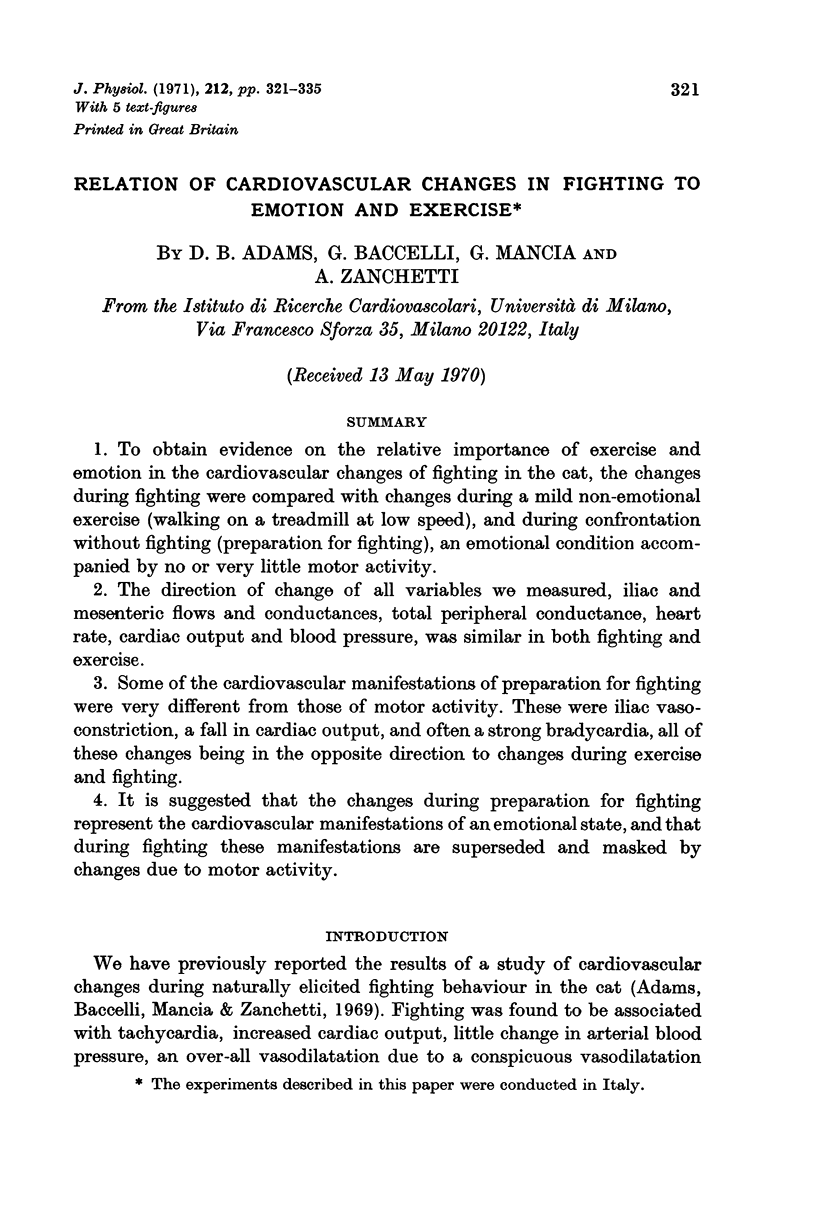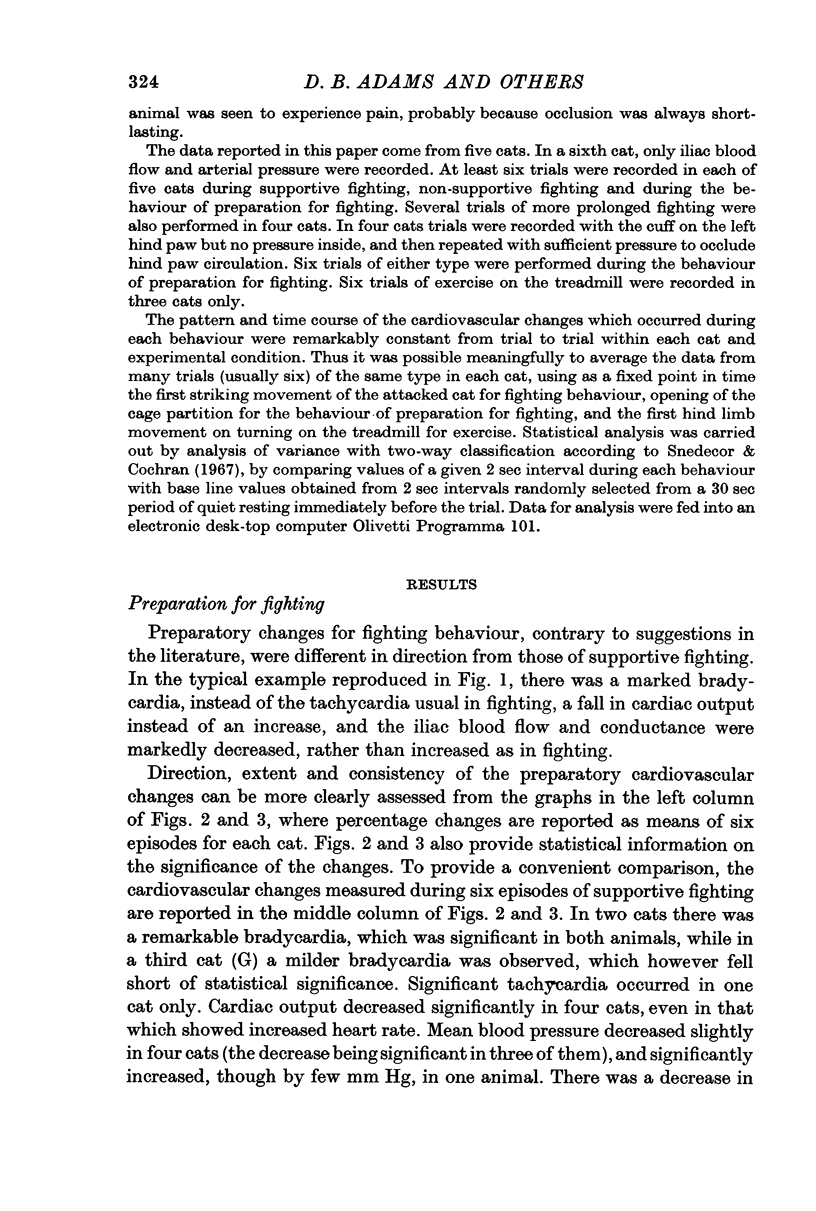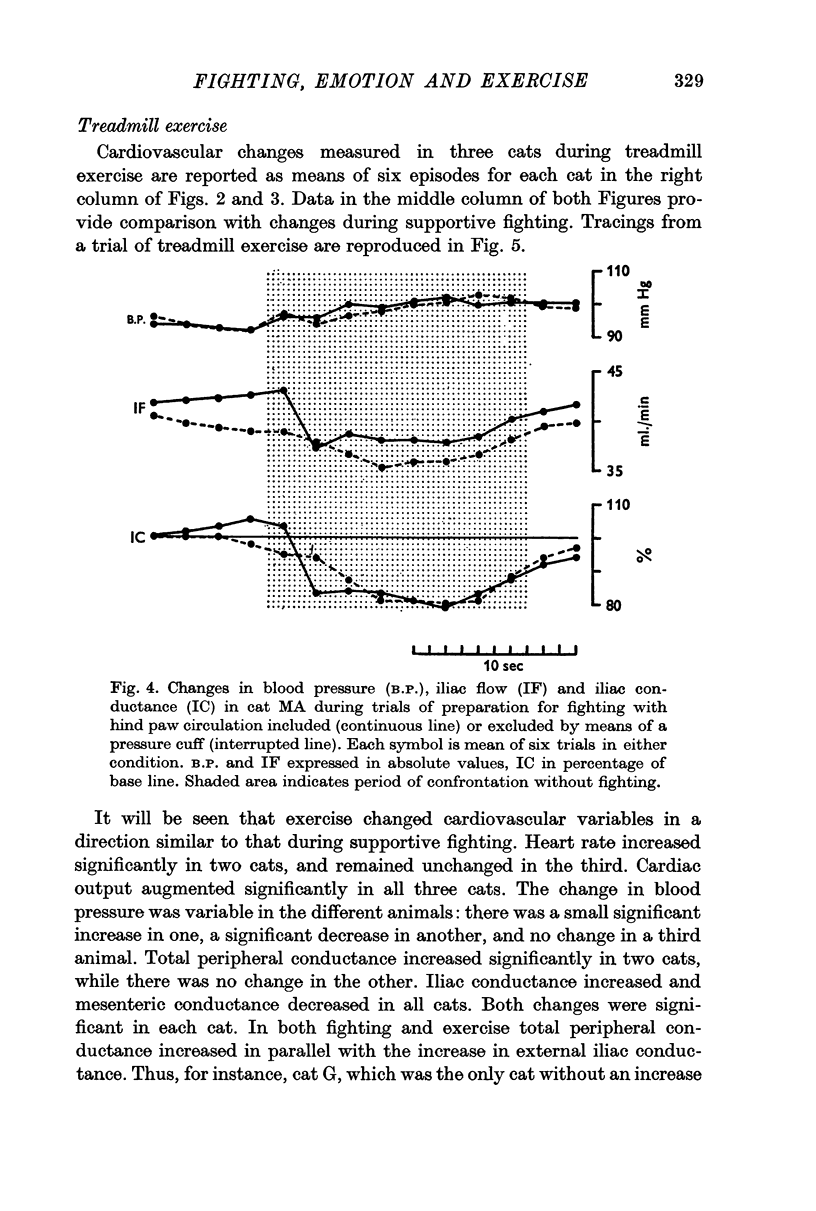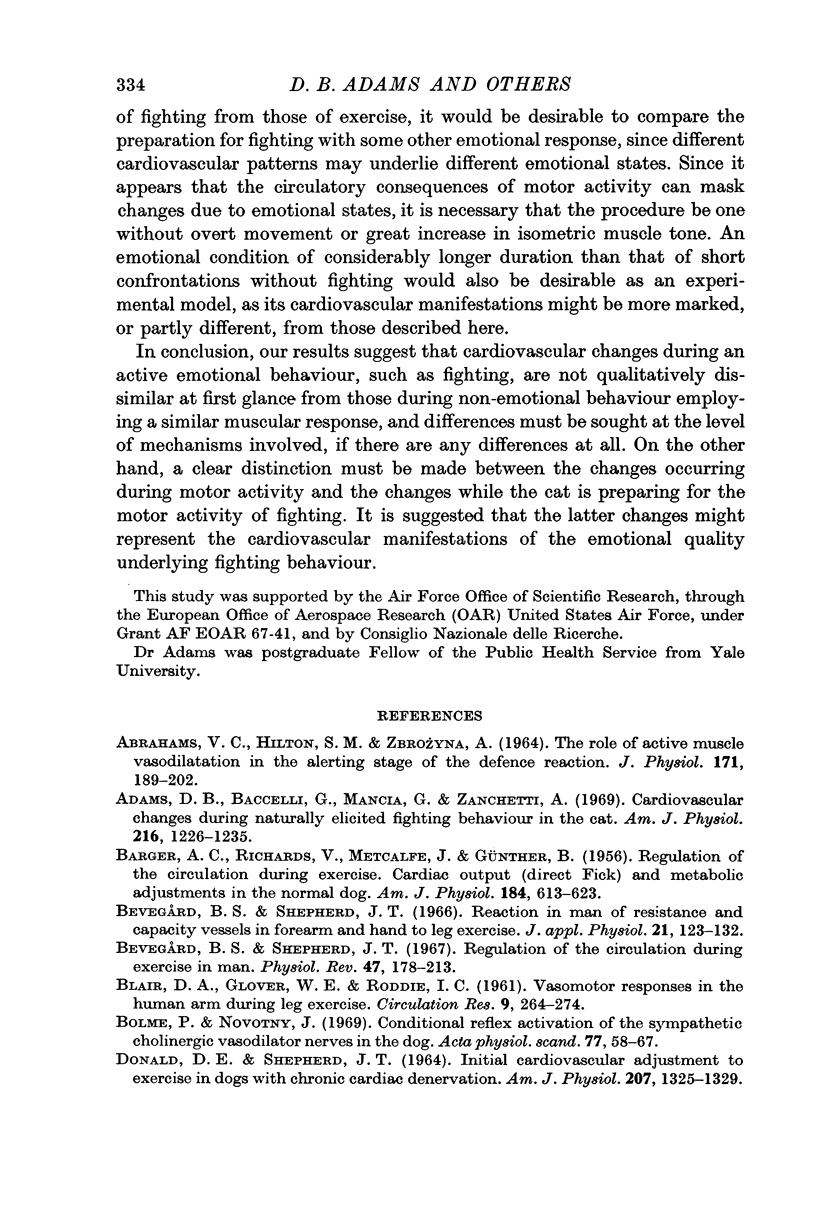Abstract
1. To obtain evidence on the relative importance of exercise and emotion in the cardiovascular changes of fighting in the cat, the changes during fighting were compared with changes during a mild non-emotional exercise (walking on a treadmill at low speed), and during confrontation without fighting (preparation for fighting), an emotional condition accompanied by no or very little motor activity.
2. The direction of change of all variables we measured, iliac and mesenteric flows and conductances, total peripheral conductance, heart rate, cardiac output and blood pressure, was similar in both fighting and exercise.
3. Some of the cardiovascular manifestations of preparation for fighting were very different from those of motor activity. These were iliac vasoconstriction, a fall in cardiac output, and often a strong bradycardia, all of these changes being in the opposite direction to changes during exercise and fighting.
4. It is suggested that the changes during preparation for fighting represent the cardiovascular manifestations of an emotional state, and that during fighting these manifestations are superseded and masked by changes due to motor activity.
Full text
PDF














Selected References
These references are in PubMed. This may not be the complete list of references from this article.
- ABRAHAMS V. C., HILTON S. M. THE ROLE OF ACTIVE MUSCLE VASODILATATION IN THE ALERTING STAGE OF THE DEFENCE REACTION. J Physiol. 1964 Jun;171:189–202. doi: 10.1113/jphysiol.1964.sp007371. [DOI] [PMC free article] [PubMed] [Google Scholar]
- Adams D. B., Baccelli G., Mancia G., Zanchetti A. Cardiovascular changes during naturally elicited fighting behavior in the cat. Am J Physiol. 1969 May;216(5):1226–1235. doi: 10.1152/ajplegacy.1969.216.5.1226. [DOI] [PubMed] [Google Scholar]
- BARGER A. C., RICHARDS V., METCALFE J., GUNTHER B. Regulation of the circulation during exercise; cardiac output (direct Fick) and metabolic adjustments in the normal dog. Am J Physiol. 1956 Mar;184(3):613–623. doi: 10.1152/ajplegacy.1956.184.3.613. [DOI] [PubMed] [Google Scholar]
- Bevegård B. S., Shepherd J. T. Reaction in man of resistance and capacity vessels in forearm and hand to leg exercise. J Appl Physiol. 1966 Jan;21(1):123–132. doi: 10.1152/jappl.1966.21.1.123. [DOI] [PubMed] [Google Scholar]
- Bevegård B. S., Shepherd J. T. Regulation of the circulation during exercise in man. Physiol Rev. 1967 Apr;47(2):178–213. doi: 10.1152/physrev.1967.47.2.178. [DOI] [PubMed] [Google Scholar]
- Bolme P., Novotny J. Conditional reflex activation of the sympathetic cholinergic vasodilator nerves in the dog. Acta Physiol Scand. 1969 Sep-Oct;77(1):58–67. doi: 10.1111/j.1748-1716.1969.tb04578.x. [DOI] [PubMed] [Google Scholar]
- DONALD D. E., SHEPHERD J. T. INITIAL CARDIOVASCULAR ADJUSTMENT TO EXERCISE IN DOGS WITH CHRONIC CARDIAC DENERVATION. Am J Physiol. 1964 Dec;207:1325–1329. doi: 10.1152/ajplegacy.1964.207.6.1325. [DOI] [PubMed] [Google Scholar]
- LEUSEN I., DEMEESTER G., BOUCKAERT J. J. Influence du travail musculaire sur la circulation et la respiration chez le chien. Acta Cardiol. 1958;13(2):153–172. [PubMed] [Google Scholar]
- RUSHMER R. F. Postural effects on the baselines of ventricular performance. Circulation. 1959 Nov;20:897–905. doi: 10.1161/01.cir.20.5.897. [DOI] [PubMed] [Google Scholar]


